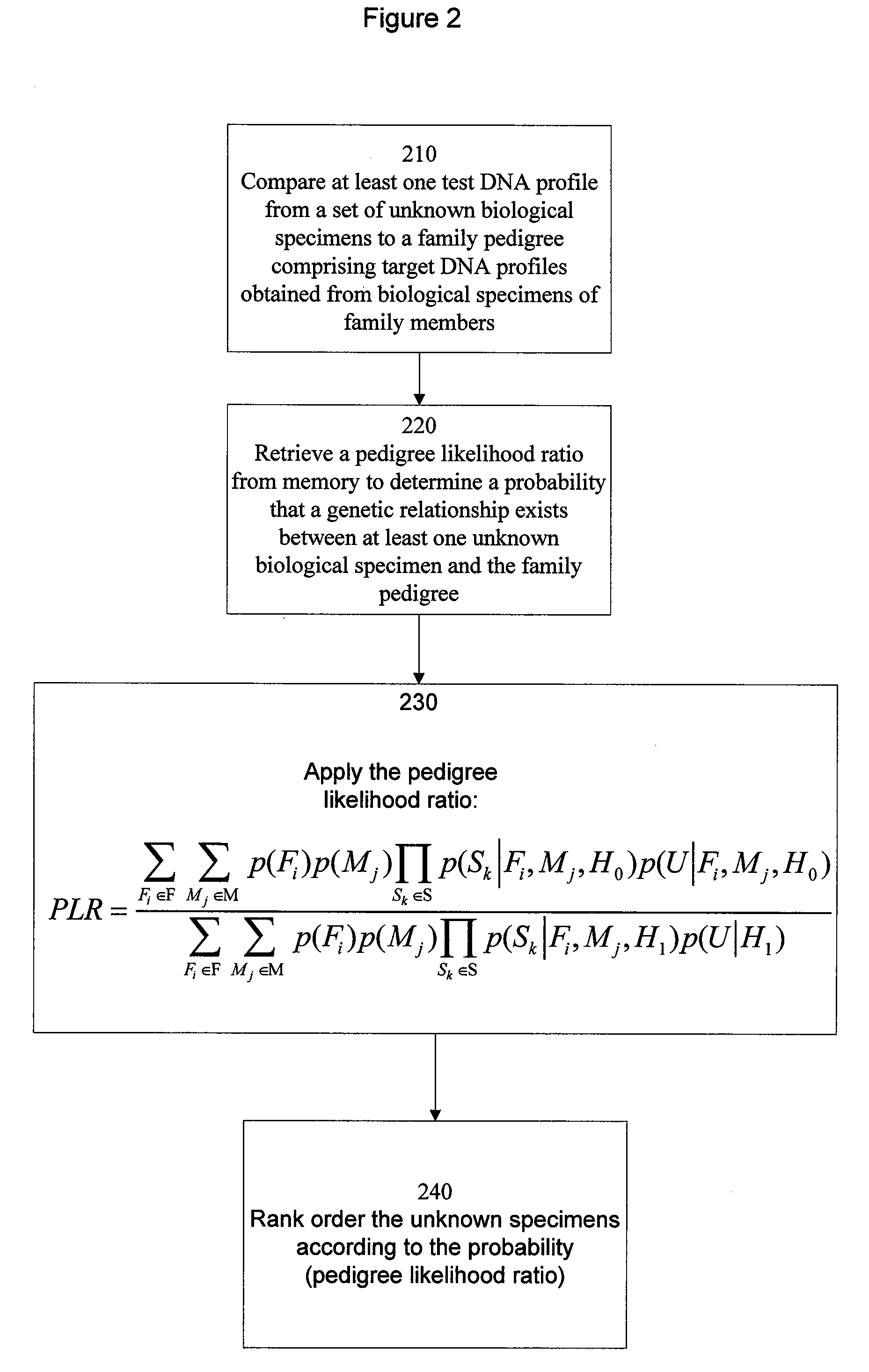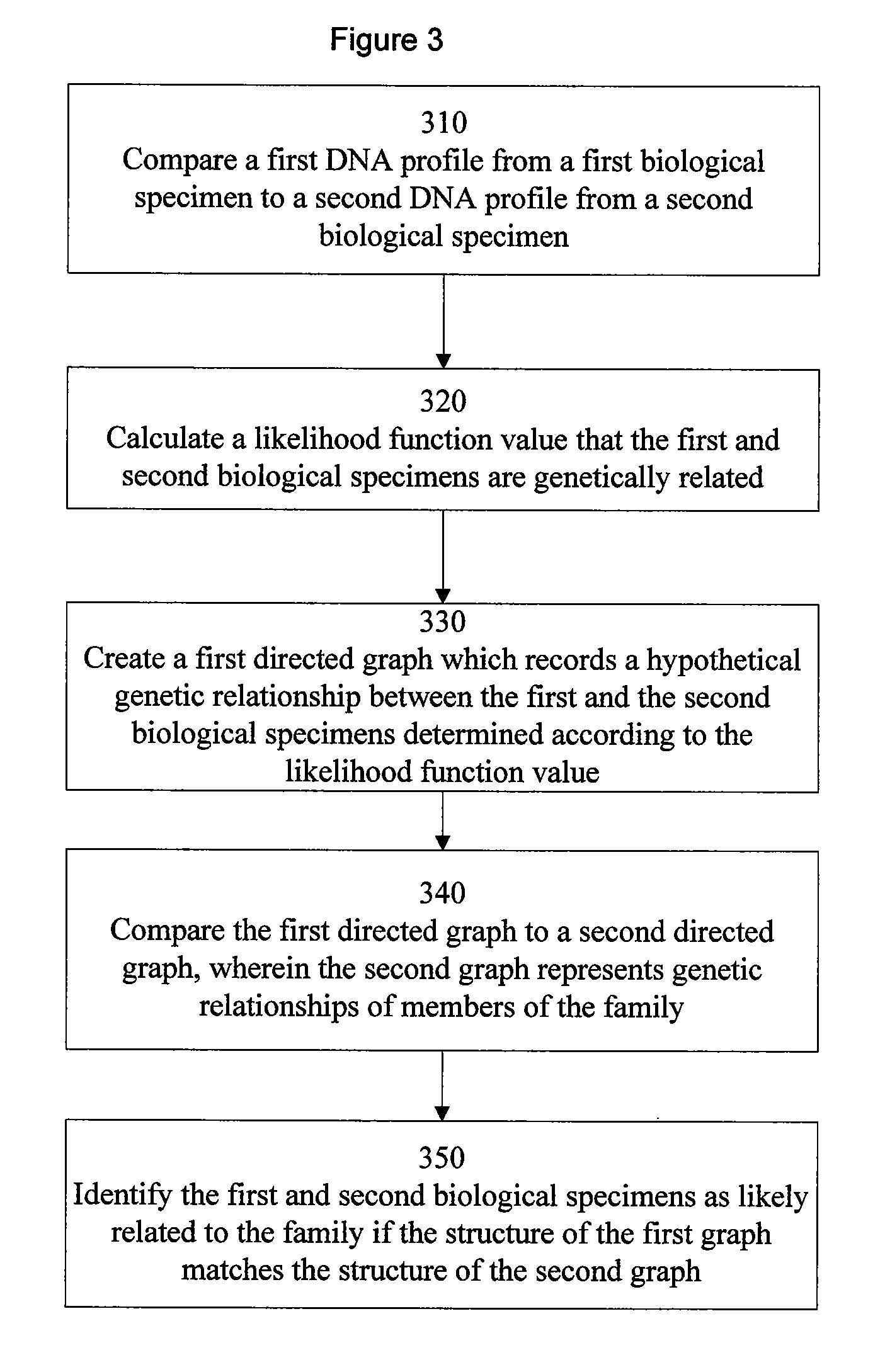Methods of associating an unknown biological specimen with a family
a technology of unknown biological specimens and families, applied in the field of methods of searching for, ranking, and identifying missing individuals, can solve the problems of forensic scientists' demands, incomplete dna profiles, and approach breakdown
- Summary
- Abstract
- Description
- Claims
- Application Information
AI Technical Summary
Benefits of technology
Problems solved by technology
Method used
Image
Examples
Embodiment Construction
[0016]Referring to FIGS. 1-4, here will now be described several embodiments of methods of predicting whether an unknown biological specimen from an individual originates from a member of a particular family. The individual can be deceased or can be living but unidentified. Methods of the invention use as much available DNA profile information as possible and permit a forensic investigator to identify an unknown biological specimen by ranking test DNA profiles from unknown biological specimen according to a calculated probability, likelihood, likelihood ratio, or a likelihood function value that the test DNA profile is related to target DNA profiles from family members of the missing individual. If an unknown biological specimen is related to more than one target family member, this indicates an increased likelihood (or probability) of a relationship between the unknown biological specimen and the family.
[0017]Methods of the invention typically are used with humans but can also be u...
PUM
 Login to View More
Login to View More Abstract
Description
Claims
Application Information
 Login to View More
Login to View More - R&D
- Intellectual Property
- Life Sciences
- Materials
- Tech Scout
- Unparalleled Data Quality
- Higher Quality Content
- 60% Fewer Hallucinations
Browse by: Latest US Patents, China's latest patents, Technical Efficacy Thesaurus, Application Domain, Technology Topic, Popular Technical Reports.
© 2025 PatSnap. All rights reserved.Legal|Privacy policy|Modern Slavery Act Transparency Statement|Sitemap|About US| Contact US: help@patsnap.com



